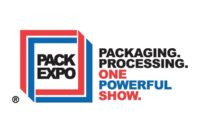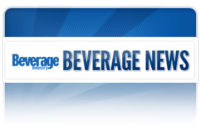Trends such as sustainability and daily nutrition from packaged beverages will be some of the highlights at this year’s Pack Expo International 2012, Oct. 28-31 at Chicago’s McCormick Place. Beverage manufacturers also will find a number of targeted resources that will make their search for innovation easier, including the new Beverage Cooler Lounge. Sponsored by the International Society of Beverage Technologists (ISBT), the lounge will serve as a central networking hub, providing industry professionals with a place on the show floor to connect and discuss the latest trends in the marketplace.
Bottles see the light
Sustainability in material use is driving demand for bottle light-weighting, according to David Dineff, director of marketing for Agr International Inc., Butler, Pa.
“Many beverage companies are beginning to manufacture their own bottles, and because of this there is increased demand for training, automated blowmolder management systems and laboratory testing equipment,” Dineff says.
Agr International manufactures a process- and quality-control system called Process Pilot that manages material distribution through a combination of precise thickness measurement and automated blowmolder control. Vision inspection also is available for random defect detection.
Dineff also notes that beverage suppliers are increasing their use of post-consumer recycled plastic, which increases the risk of contaminants in bottle manufacturing. “Agr’s Pilot Vision system is able to inspect preforms and bottles and remove defects and blemishes. This is an important service for self-manufacturers with limited resources,” he says.
Another trend is some manufactures seeking to replace polyethylene terephthalate food and beverage containers for reasons of both sustainability and processing economics. According to Scott Steele, president of Plastic Technologies Inc. (PTI), Holland, Ohio, interest in developing bio-derived PET has never been greater.
“While many of today’s feedstocks for biosynthetic processes still use corn or sugar cane, there is significant research directed toward moving away from today’s food source material feedstocks to non-food competing biomass such as algae and agricultural waste,” Steele says. He adds, however, that the economics of bio-derived polymers continue to be a challenge.
Steele cautions that some sustainability efforts might actually have negative environmental consequences, especially when it comes to new resins, additives, multi-layer structures, labels and label adhesives.
“There’s a real concern that these innovations will become contaminants in the recycling stream, and this is why it is important to test various packaging components for recycling stream compatibility early in the development process,” he says.
Steele notes that one high-volume innovation getting a lot of attention these days is two-stage injection stretch-blow molding (ISBM). Key advantages of the technology over PET include its low density, moisture barrier, high temperature resistance and natural squeezability, he adds.
“ISBM processes provide a good platform to exploit polyolefins and become a growth area for packaging,” Steele says.
Lighter cartons becoming the new heavyweights
For Graphic Packaging International (GPI), Marietta, Ga., sustainability in the beverage industry has been a key driver for its business.
Earlier this year, GPI redesigned Kraft Foods’ Capri Sun juice brand 10-count carton from a B-flute corrugated laminated box to a heavyweight, clay-coated, solid, unbleached sulphate folding carton. Chuck Tarlton, director of strength packaging for GPI, says GPI and Kraft spent three years planning the conversion project, which involved 65 filling lines at four plants. They implemented the conversion over four months in early 2012.
“In making this new carton, we drove out 35 million pounds of fiber to offer a more sustainable, lower-cost package with greater functionality,” Tarlton says. The project resulted in an overall 20 percent reduction in secondary packaging, with corresponding benefits to supply chain sustainability, including a 30 percent reduction in [carbon dioxide], because of the switch from corrugated to paperboard, and a 40 percent reduction in the number of trucks transporting cartons.
The lighter-weight carton is easier to carry and open, and because of its optimized headspace, five cartons can fit on a store shelf instead of four, GPI notes. Another point-of-purchase benefit is the elimination of the washboard effect that showed through the graphics on the laminated corrugated box.
Sustainability for GPI begins with materials, according to Andy Johnson, director of government affairs and sustainability for the company. “We’ve changed the raw materials in our paperboard to 100 percent pine, which reduces the amount of fiber without sacrificing performance requirements like high tear strength,” he says. “We work with our customers to right-size their packaging, and we design for effective asset utilization.”
During the last decade, GPI has worked to create more sustainable manufacturing processes, from consolidating its supply chain to shortening distances between paper mills and converting plants. In late 2010, the company announced plans to install a high-efficiency biomass boiler and a 40-megawatt turbine generator in its Macon, Ga., paperboard mill. The $80 million investment is expected to make the plant entirely self-sufficient for its electricity and steam generation by the middle of next year, it says.
Reducing packaging material also has been a focus for Bosch Packaging Technology, New Richmond, Wis. Earlier this year, Bosch introduced the new SurePouch range of pouches for applications that include non-carbonated beverages, condiments and soups. The pouches, which range in filling volumes from 100 ml to 5 liters, are designed with thinner-gauge plastic materials that are 80 percent lighter than alternative rigid formats such as cartons, metal containers and cans, it says. In addition to cost and energy savings throughout manufacturing and transportation, the format lowers product-to-package weight ratios, Bosch adds.
The packs are filled on Bosch’s SurePouch roll-fed vertical form, fill and seal machines, which are capable of filling products with varying levels of hygiene, including ultra clean-fill. The reclosable spouts on the SurePouch are electronically welded to pouch exteriors and can be positioned in various locations based on customer preference.
The SurePouch system offers other manufacturing benefits by enabling different sizes and formats. “We can produce a number of formats on the same piece of equipment,” says Guenther Burkhard, president of Bosch Pouch Systems. “This gives the customer flexibility and meets market demands."
Beverages bulk up on solids
The growth of nutraceutical beverages also is driving manufacturing innovations. For example, the trend for incorporating more solids in beverage formulations, primarily to increase fiber content, can put additional performance demands on processing equipment.
“In the old days, carbonated beverages were just sugar and water, with about 10 percent solids,” says Rick Earley, beverage market manager for Admix, Manchester, N.H. “Now the idea is, ‘Drink your beverage and get your fiber,’ which means we’re seeing beverage brands with more than 30 percent solids. That’s a lot of powder that needs to be dissolved during processing.”
Compared with conventional in-tank mixing, which has low- to moderate-shear, in-line powder induction equipment can increase shear by 25 to 35 percent, Admix notes. Not only does the technology use up to 75 percent less energy, but it reduces batch times by up to 70 percent, it adds.
To handle the increased demands, beverage manufacturers are turning to in-line powder induction and dispersion equipment, which can handle greater amounts of solids while reducing batch times and dust, according to Admix. Earley says Admix’s equipment can handle a range of solids, from simple powders like whey or milk to tough viscosity enhancers like xanthan gum.
“We’re seeing processing for some applications go from six hours down to 45 minutes,” Earley says.
For more information about Pack Expo International 2012 or to register, visit www.packexpo.comor contact PMMI’s Show Department at 703/243-8555 or expo@pmmi.org.




